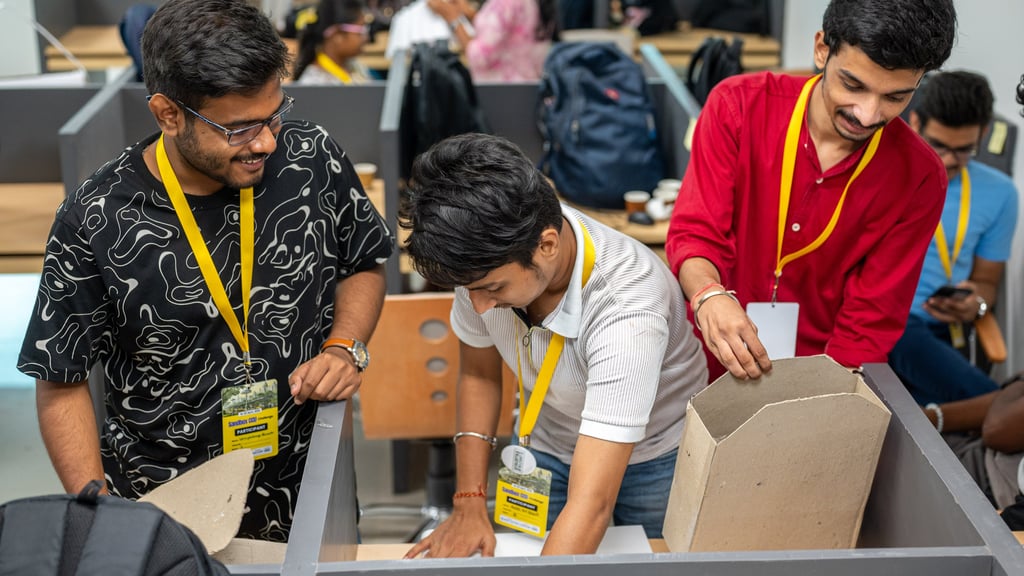Sandbox CCU: Reimagining Kolkata as a Sustainable City of the Future
In April 2025, Techno India University transformed into a lively hub of imagination and collaboration. Over the course of a week, nearly 300 students stepped into a different kind of classroom. Here, they were the CEO and they were the one who made the rules. Sandbox CCU was not a conventional program. It was a week-long design challenge and learning journey co-created by the rebalance institute, Elseplay, Make Calcutta Relevant Again, and Techno India Group. The goal was simple yet ambitious: invite students to reimagine the Kolkata of tomorrow through the lens of sustainability, equity, and innovation.
2 min read
In April 2025, the halls of Techno India University pulsed with a kind of energy that doesn’t often come from textbooks or lectures. Nearly 300 students came together across five program days to do something rarely asked of young people: imagine a better Kolkata, and begin building it.
Sandbox CCU invited students to learn by doing, to think across disciplines, and to treat their city not just as a backdrop, but as a living system they could shape. The program was co-designed by the rebalance institute and Elseplay and supported by Make Calcutta Relevant Again, and Techno India Group, each bringing a different lens to the same question: what does a just, joyful, and livable future look like?
What Happened
The journey began with an orientation that felt more like a festival of ideas than a briefing. Students formed groups and selected one of four urban themes to explore more deeply: Learning and Employment, Public and Heritage Spaces, Healthcare and Wellbeing, Transportation. They ran, planned, drew and reflected on the porblems they wanted to look into. by the end of the day they had a problem theyh wanted to work on.
Over the weekend, each team investigated the real-world challenges hidden in plain sight. They interviewed, mapped, debated, and slowly arrived at the roots of a problem they felt was worth solving. Facilitators from various organizations and specializations dropped in to support, but always with care not to take over. Ownership remained with the students. They were the CEOs while the rest were their interns. They built plans and a minecraft simulation of the solution they are proposing.
Ideas ranged from redesigned community toilets to digital interfaces that rethink how fines are issued in public spaces. Some wanted to make public transport more accessible. Others focused on waste, street vending, or the use of space.
What It Left Behind
What stood out most was not the polish of the proposals, but the kind of attention students brought to the work. Many asked questions that adults have long stopped asking. Some named problems that had been invisible in plain sight. Others proposed ideas that weren’t “feasible” by usual standards, but felt undeniably human.
Sandbox didn’t try to teach students how to fix the city. It asked them to listen to it. To get lost in its complexity. To see how their own behaviours shaped the very systems they were trying to change. And maybe, to start seeing themselves not just as students of a curriculum, but as citizens of a living, breathing, unfinished city.
And What Comes Next
There are already conversations about adapting this format for other campuses and communities. The model is flexible, and deeply local by design. If you’re curious, we’d love to share more.
We’re grateful to every student who showed up with curiosity, to every facilitator who held space with care, and to every partner who helped bring this to life.
Let’s keep learning from each other. Let’s keep building cities that are shaped not just by policy, but by possibility.




